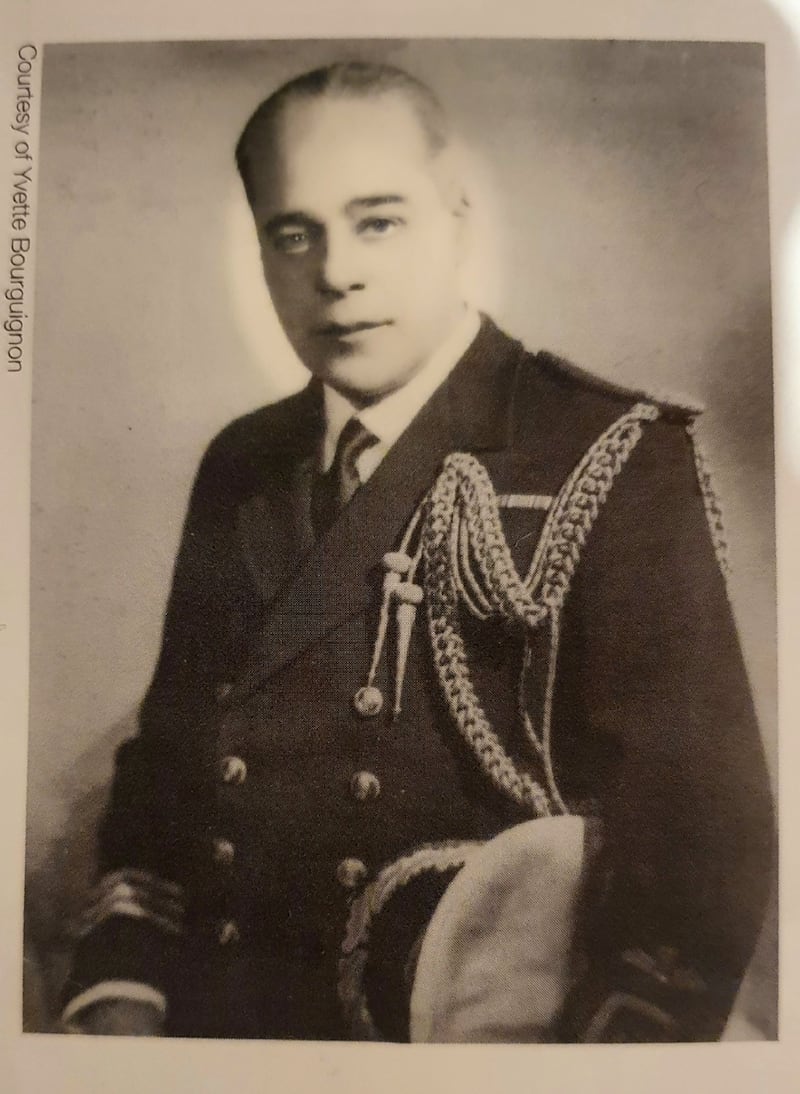The release of the star-studded new film Operation Mincemeat, which deals with the highly successful British deception of Nazi Germany by means of a trick that changed the course of history in the second World War, recalls a scarcely known Irish link to its “corkscrew thinker” planners.
Two British army officers entered the Royal Marine Hotel in Kingstown (Dún Laoghaire) one day in 1919. Observing an unknown young lady in the hotel lobby, one of them said to his comrade: "I'm going to marry that lady!" They went on to meet each other, and marry, but not until 10 years later.
This is far removed from the flight of the Chieftain O’Sullivan Beare to Spain in 1606, the British Admiralty, spying and counter-espionage in the second World War, and the Allied invasion of Sicily following what some believe was the most spectacular single episode in the history of wartime deception.

The lady in the hotel lobby was Yvonne O'Sullivan Beare, a descendant of the chieftain of Beara who had fled to Spain after the Irish defeat at Kinsale. She now lived in Gibraltar. Her father, a graduate of Trinity College Dublin, had served as the British consul-general in Rio de Janeiro but was mysteriously dismissed after many years' service, possibly on account of his friendship with Roger Casement. (He declined Casement's invitation to join the cause for Irish independence, partly as he believed that an independent Ireland could not survive economically.)
The ‘Don’
His son-in-law, Salvador Augustus ‘Don’ Gomez, added his wife Yvonne’s title O’Sullivan Beare to his name after their marriage. He held both British and Spanish nationalities, spoke both languages perfectly, and, according to Ben McIntyre’s marvellous bestseller Operation Mincemeat, played bridge with Ian Fleming (creator of James Bond) in his London club, and played golf all year round in Spain where he lived.
He had spent two years fighting in the trenches in France before joining the Royal Flying Corps in the first World War. He would later become staff officer and military intelligence officer to General Franco in the Spanish civil war, McIntyre holds. A Spaniard to the Spanish and an Englishman to the English, it is said that he was offered the rank of captain in the Royal Marines because of his enormous moustache.
During the second World War he was appointed assistant naval attache at the British embassy in Madrid, and by this time he is thought to have had a network of spies throughout neutral Spain, where pro-German spies were just as numerous, many perhaps acting as double agents.

Following the defeat of Germany in north Africa, an Allied invasion of Europe was the next move agreed by Churchill and Roosevelt at Casablanca in 1943. This logic was obvious to the Germans, but where would the invasion come ashore? Would it be Sicily or Greece? Sicily was the obvious place but, in Room 13 of the Admiralty in London, a plot was being hatched to persuade the German high command to expect the landing in Greece.
The plot
From the “corkscrew” thinking of Admiralty men such as Ewen Montagu, Charles Cholmondeley and Ian Fleming, a deception plan was emerging to ditch a dead body somewhere in the sea, dressed in naval officer uniform, and carrying a top secret message. This would be a (fake) personal letter from Admiral Mountbatten to General Alexander, giving details of an imminent Allied landing in Greece and perhaps Sardinia; the body would carry evidence of identity that was verifiably convincing.
Where to ditch the body by submarine so as to ensure that its message would be picked up by German spies, transmitted to Berlin, and convince them of the genuineness of the “plan”? Somewhere in Spain perhaps. Here it became obvious that the plotters would need someone with imagination, discretion, inside knowledge of – but invisible to – German spy networks in Spain, and who also had the ability to think around corners. Gomez O’Sullivan Beare, now naval attache to the British embassy in Madrid, was the obvious candidate. He recommended Huelva, north of Gibraltar, where there were numerous German spies.
And so, on April 30th, 1943, the submarine Seraph floated onto the incoming tide the dead body of a fictional Major Martin – actually that of a dead Welsh tramp – the “man who never was” of the eponymous film of 1956.
The outcome
Word of the “find” of the body washed up on the coast quickly reached the German embassy to neutral Spain, in Madrid, as planned for by Gomez O’Sullivan Beare. The ambassador managed to have the documents in the briefcase attached to the body in the morgue copied and forwarded to Berlin.
Josef Goebbels was suspicious of the find, especially in view of the timing, but Hitler, at first sceptical, eventually swallowed the bait and ordered that a large number of German divisions, some even from occupied Sicily, be sent to the Peloponnese. As a result, the number of his divisions in the Balkans was more than doubled in preparation for an expected invasion through Greece that never happened.
The actual invasion through Sicily and Italy met considerable German resistance, but the surprise element gave the Allies an advantage far beyond the minuscule cost of the highly ingenious Operation Mincemeat.
Although he was rewarded with an OBE, until the day he died Gomez O’Sullivan Beare (to whom this writer is related) remained totally silent to his family about his wartime experiences as a secret agent. In this he resembled others of his idiosyncratic colleagues.
Prof Desmond Swan’s upcoming co-authored book, Modern Morocco Viewed Through the Speeches of King Mohammed VI 1999-2019, will be published later this year











